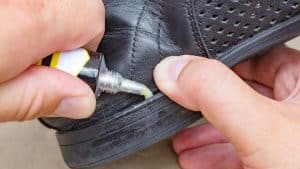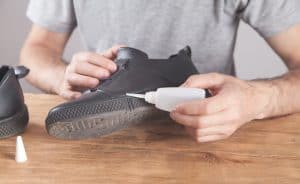Finding new ways to care for your favorite belongings can feel endless sometimes. Do you have a pair of leather boots that you want to wear but see that they are peeling? What can you do to fix this and prevent further peeling from happening? Luckily, we have the answers and will dive into them below.
One of the first things to realize is that genuine leather won't peel. That means your boots are most likely synthetic material, which comes with its own set of maintenance needs.
With that said, real leather may begin to dry out and crack, which you can repair using a leather filler/cleaner. For peeling boots, you want to try a leather filler and color match it as closely to your footwear as possible.
As we start, we will cover all things peeling leather boots and discuss how to fix yours. Whether your shoes are 100% natural material or synthetic, we're here to offer some guidance. With that said, let's dive right into this topic!
![Restoring old and damaged leather shoes on a table, Why Are My Leather Boots Peeling? [And What To Do About It]](https://stylecheer.com/wp-content/uploads/2022/06/Why-Are-My-Leather-Boots-Peeling-And-What-To-Do-About-It.png)
This article may include affiliate links and elements that were carefully created by our team using advanced ai to help you envision the best style advice.
What Causes Leather Boots To Peel?
In general, genuine leather material won't necessarily "peel" but may start to crack or dry out over time. As we said, synthetic faux leather peels as it ages, so your boots may be partially or entirely artificial.
Regardless, wearing leather and exposing it to the elements will cause it to degrade. This is pretty common, so you want to act fast if damage starts to occur.
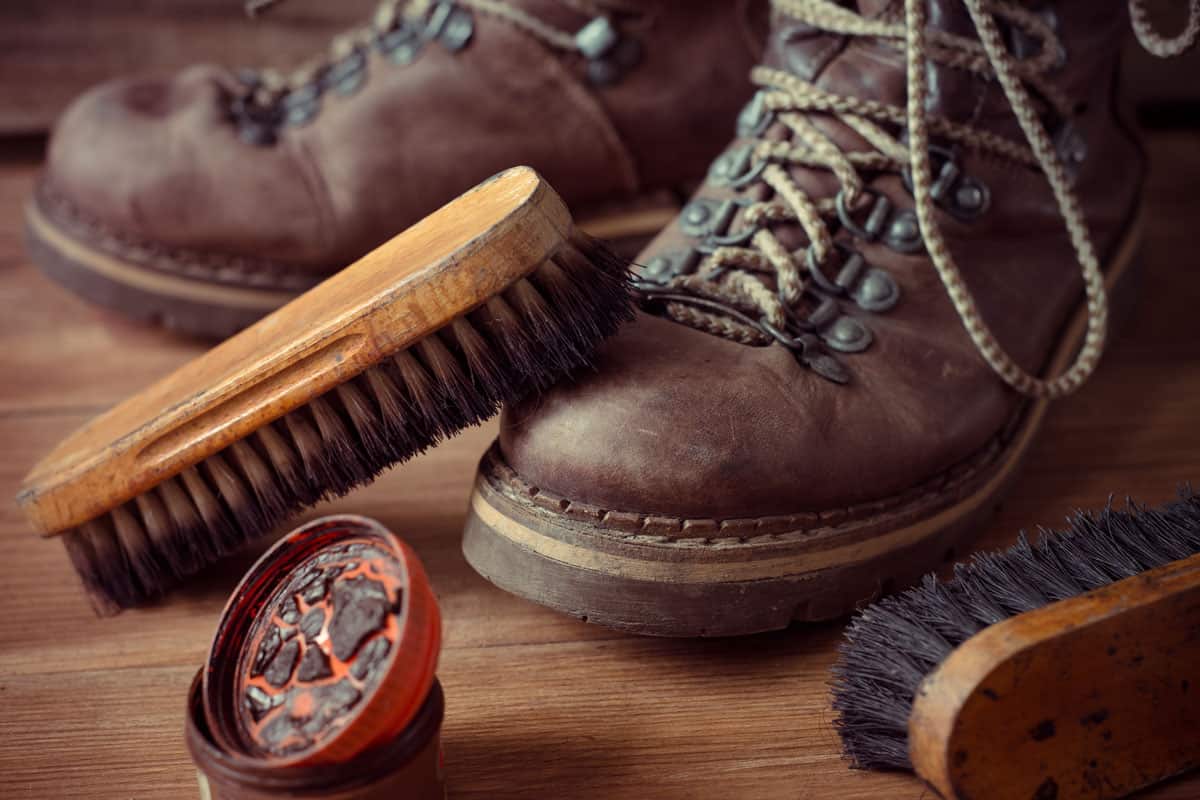
One of the mistakes leather owners make is using harsh chemicals to clean their footwear/accessories. According to Mahi Leather, even using baby wipes on your leather shoes can cause irreparable damage over time.
Furthermore, any cleaners that contain chemicals or solvents will damage leather. That goes for real or faux, so try to find a specialty product solely meant for leather accessories.
Another cause for peeling or cracking leather is letting your boots sit out in the sun for long periods. Like our skin, the sun can dry out leather apparel/footwear rather quickly, causing it to become damaged.
For this reason, you want to store your leather goods in a cool, dry place away from the sun. You also don't want your boots to get wet too frequently, as this can cause them to warp, crack, and peel.
So if you notice your shoes looking a bit dry, grab a leather conditioner and go to town on them.
How Do You Stop Leather From Peeling?
If you have peeling or cracked leather shoes, you want to condition them ASAP. As we mentioned above, leather doesn't react well to the sun or moisture, so give them some TLC if your boots come in contact with either.
If the peeling/cracking is minor, you can try using a leather recolouring balm on the damaged area. Ideally, you want to apply your product with a sponge and let it dry completely between your second or third application.
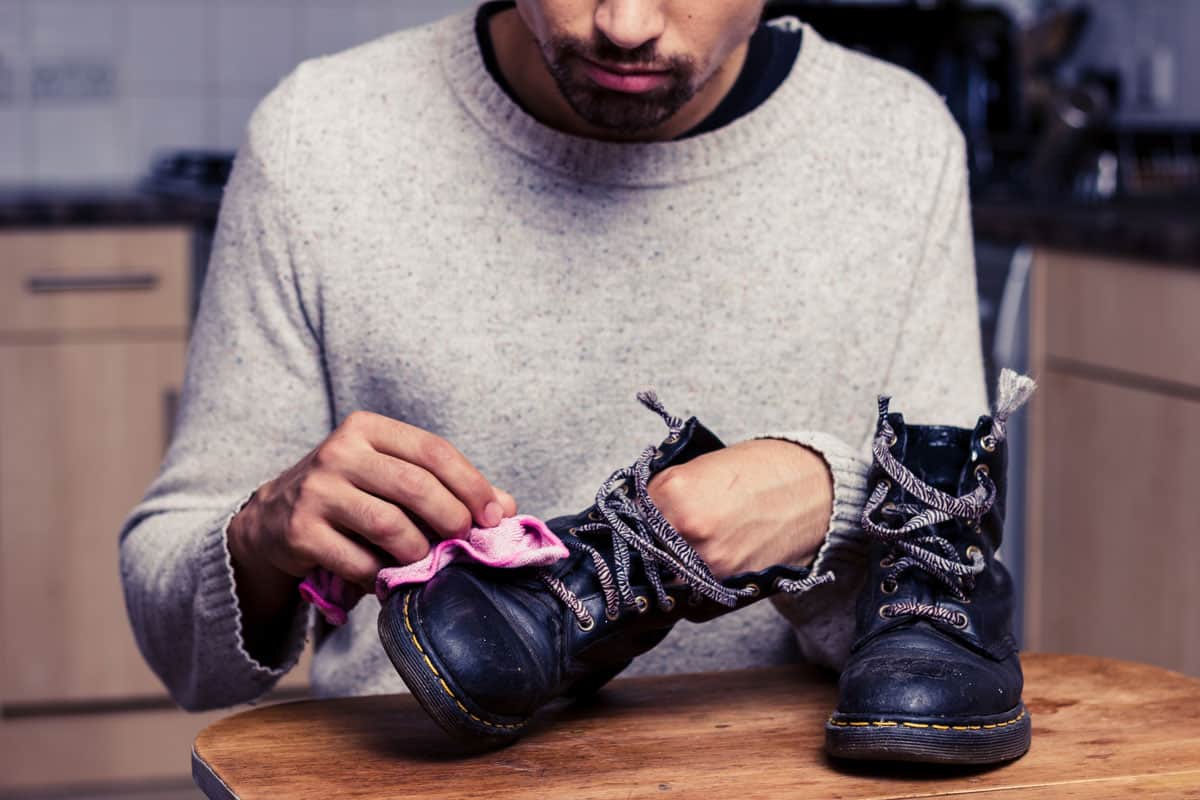
If your boots have major damage, you want to try a leather filler or take them to a shoe specialist. Although trying a DIY method can be helpful, severe leather damage isn't always fixable.
For example, if your shoes have a significant gash or lose a part of their leather exterior, you might have to throw them away. To prevent this from being your only choice, many experts recommend coating leather shoes in baby oil.
The oil creates a protective coating for your boots, especially if they are synthetic or "faux" material.
However, most leather repairs will only hide the actual damage at hand. Unfortunately, once leather becomes damaged, this can be permanent. So the best way to stop your leather from peeling is to protect it in the first place.
FurnitureClinic Leather Easy Restoration Kit
This leather restoration kit comes with recoloring balm, cleaner, a sponge/cloth, works for genuine leather surfaces, has a satisfaction guarantee, and is available in various colors.
Check out this repair kit on Amazon.
Can You Fix Damaged Leather?
Yes, you can usually repair damaged leather. As we covered, if the cracking or peeling is severe, you may have to reach out to a professional, so keep that in mind.
Additionally, it's a good first step to figure out what material your leather shoes are. Are your boots 100% authentic leather, or are they a vegan, synthetic mix?
You want to use a leather filler and dye to fix any cracking for ">genuine leather.
To do this:
- Grab your shoes and place them on a flat surface.
- Remove the laces and place a boot tree inside to keep their shape.
- Take a horse hair brush and clean your shoes (gently).
- Grab a leather-appropriate soap and apply it with your brush.
- Wet your horse hair brush and dip it in a lather of your product(s).
- When done, wipe off the product, and let your boots dry for 15 minutes.
- For cracks/marks, grab a clothing iron and set it to 'Cotton.'
- Place a damp towel over your shoes and place the iron on top.
- Apply some pressure with the iron, then stretch the shoes out manually.
- If your boots have cracks, use a leather filler at this point.
- Once your shoes are dry, apply a leather conditioner to them.
- After that, let them sit for 1-2 hours and apply a recoloring balm.
- Last, buff your footwear with a horse hair brush, and you're done!
Pro-Tip
It's also good to test any products you use for your leather on an inconspicuous spot to ensure it won't affect their color. The last thing anyone wants is to damage their footwear while trying to fix a crack or peeling.
Another way to keep your shoes from creasing, cracking, or peeling is to place a shoe tree inside during storage. That essentially maintains their shape, lessening the chances of damage.
How Do I Repair Faux Leather Boots?
Your repair process will be slightly different for anyone with faux or vegan leather boots.
To start, you'll need:
- Sandpaper
- Shoe polish
- A permanent marker
- Faux leather conditioner
When you have everything you need:
- Sand off any peeling/flakes from your shoes.
- Fill in any cracks with a similar-colored permanent marker.
- Grab a matching shoe polish/recoloring balm and apply it to your boots.
- Allow your faux leather to dry for 12-24 hours, and you're set!
On top of that, you may need to repeat this process every year or two. Considering that synthetic leather won't last nearly as long as a natural material, the upkeep can be more frequent.
In addition, you may need to replace your boots more often, as you can't always fix peeling. It's also essential to condition your faux leather footwear and apparel every six or so months to prevent anything from happening.
You also want to store your shoes somewhere dry and out of the sun, so keep that in mind.
How Long Does Leather Last?
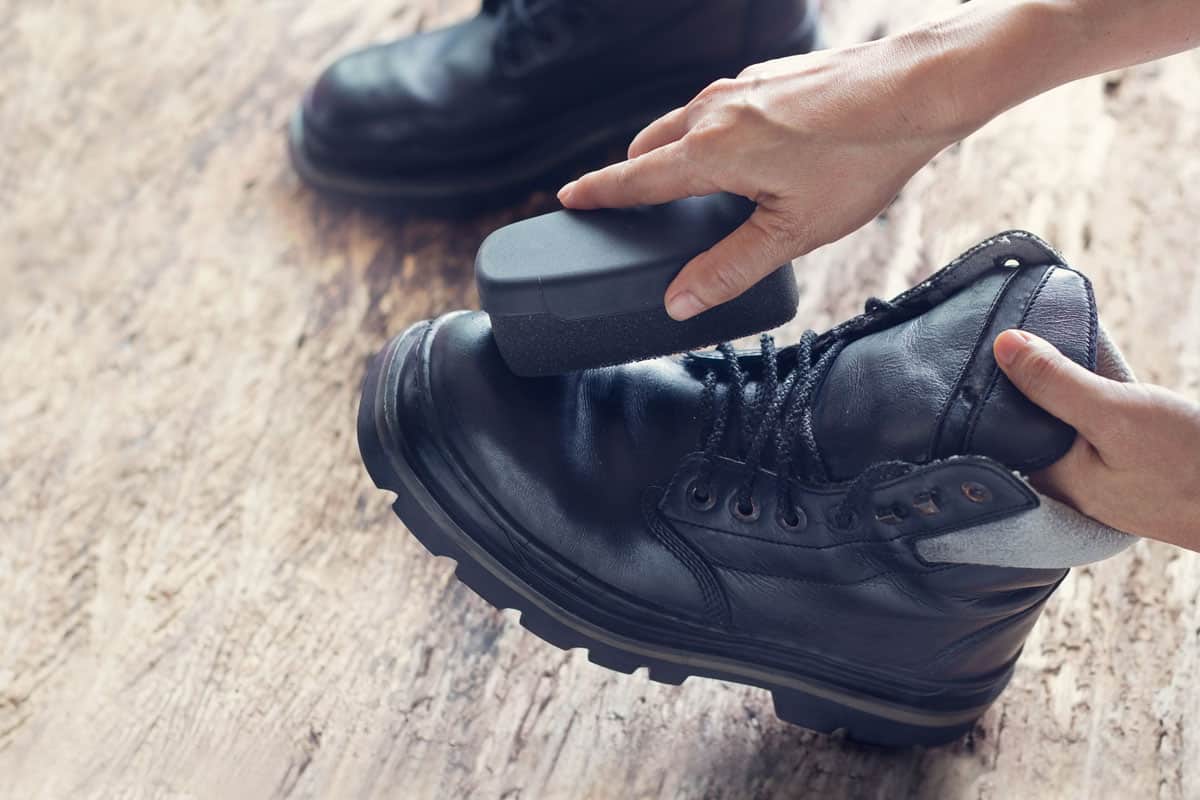
Although everyone will be different, you can expect high-quality leather to last upwards of ten years. Typically, leather shoes will age gracefully as long as you condition and protect them accordingly.
Another fun fact about leather is that it is four times for durable than fabric, hence why it lasts so long.
Additionally, if you maintain your leather goods properly, you will extend their lifespan. Although conditioning your shoes doesn't seem necessary, it can make a difference.
When it comes to synthetic leather items, they will have a shorter lifespan. Generally, faux leather shoes will last between two and four years, significantly less than real.
So if you're torn between the two, it would be a better long-term investment to purchase a genuine leather pair of shoes rather than one that won't last more than five years.
How Often Should I Condition Leather Boots?
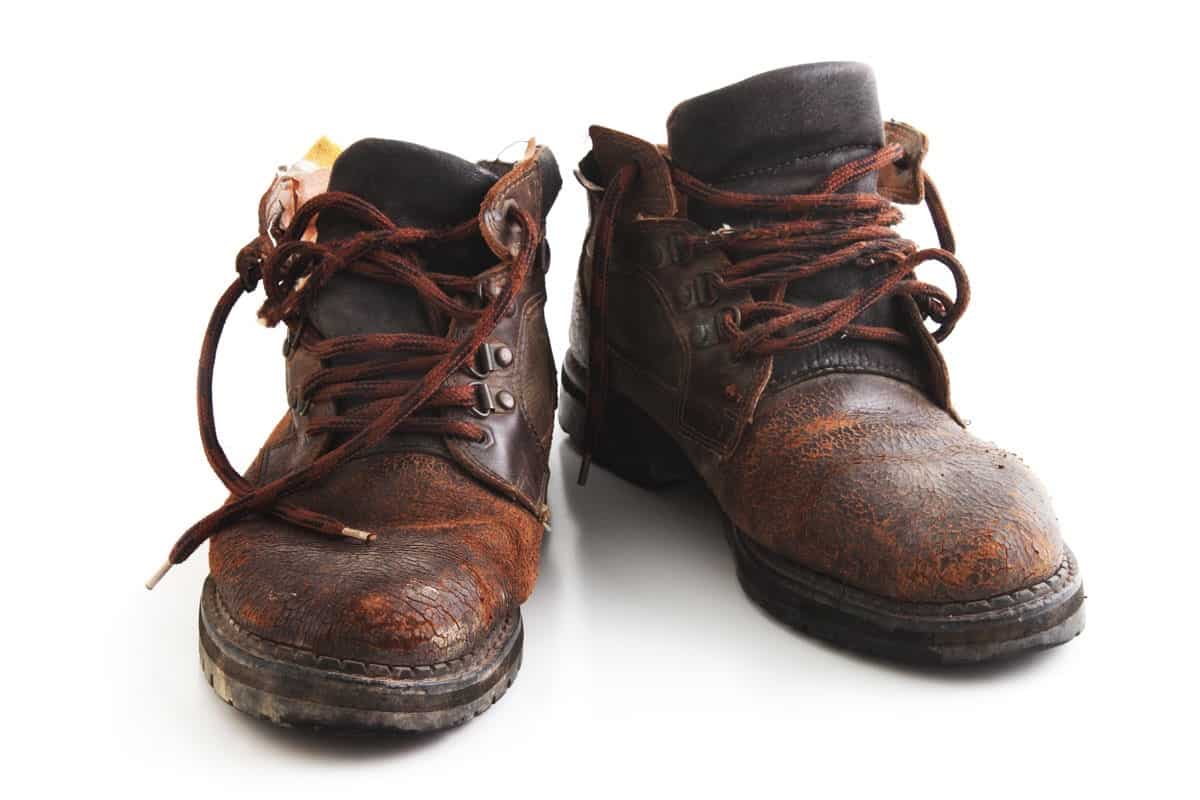
Depending on how often you wear your footwear, this can affect the maintenance. In general, you want to condition leather every 3-6 months. Of course, if you wear your leather every day, you might need to do this monthly.
On the other hand, if you rarely put on your boots and store them well, you shouldn't need to apply a conditioner more than every 6-12 months.
Your climate can also play a significant role here. For example, someone living in Arizona or Nevada might need to condition their leather goods more frequently than someone in Florida or California.
Think of this as the drier your weather, the more often you need to condition your leather boots.
Leather Honey Leather Conditioner
This leather conditioner works on apparel and furniture, is non-toxic, is American-made, and comes with a 100% satisfaction guarantee.
Follow this link to view it on Amazon.
To Wrap It Up
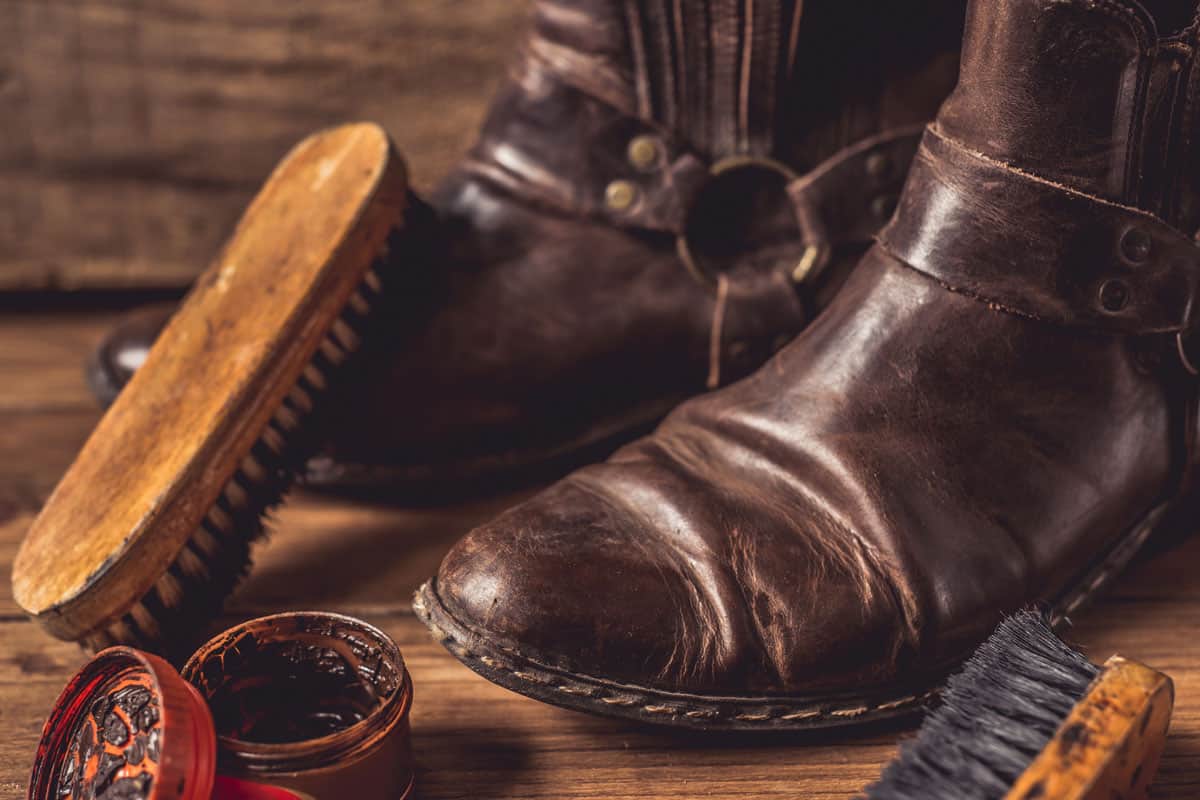
Whether you have natural leather boots or synthetic ones, it is essential to know how to repair them. We found that leather boots will peel and crack if you don't store and maintain them correctly.
Generally, you need to condition leather every 3-6 months, although you may have to do this monthly if you wear them often. You also want to store leather in a dry, cool location that doesn't have sun exposure.
Regardless, make sure to repair your shoes ASAP if you notice peeling or cracking, and don't forget to use a soft horse hair brush to buff them out afterward!
Made it to the end? Check out these helpful related leather posts below!
How To Clean Waterproof Leather Boots [In 3 Easy Steps!]




